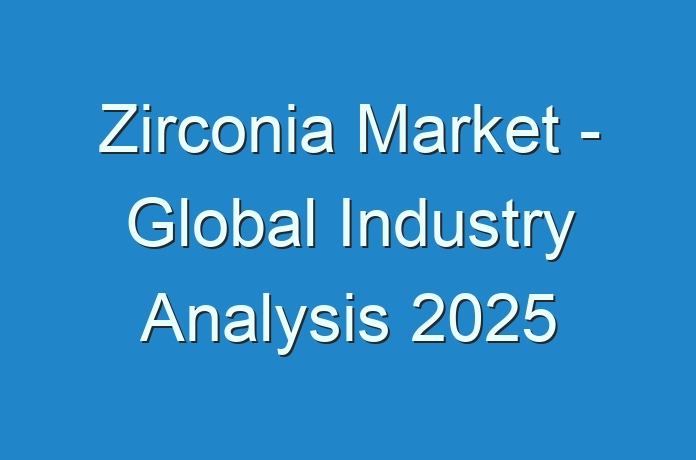
Zirconia, also referred to as zirconium dioxide, is a white crystalline oxide of zirconium. Zirconia is synthesized in various colors for use as a gemstone or a diamond simulant. It is a widely used ceramic oxide. Its applications range from use in the production of ceramics, to several other uses such as a protective coating on particles of titanium dioxide pigments, as a refractory material, and in insulation, abrasives and enamels. Zirconia is a highly useful type of electroceramics, owing to its ability to allow oxygen ions to move freely through the crystal structure at high temperatures. It is also used as solid electrolyte in electrochromic devices. Zirconia is a precursor to the electroceramic lead zirconate titanate, which is a high-K dielectric, found in myriad components. Zirconia is used in tooth crowns to complete the restoration of missing teeth, and to strengthen the weak teeth with a precaution to prevent it from further decay.
Download PDF Brochure – https://www.transparencymarketresearch.com/sample/sample.php?flag=B&rep_id=30245
Zirconium nanoparticles are used in solid oxide fuel cells and in nitrogen oxide, oxygen gas sensors. The fully stabilized ZrO2 nanoparticles, attributed to their high oxygen ion transport capabilities and long-term stability, are well-suited for high temperature energy conversion systems. They are available in the form of nanodots, nanofluids, and nanocrystals having a white surface area. They are often doped with yttrium oxide, or magnesia. These nanoparticles appear in the form of a white powder. The applications of zirconium oxide nanoparticles are: in ceramics to make ceramic pigments, porcelain glaze to make artificial jewelry, and to make abrasive, insulating, and fire-retarding materials. The powder exhibits pyro optical properties; therefore, it is used for optical storage, light shutters, and stereo television glasses. Increase in the production of nanoparticles is expected to propel the market for zirconium dioxide significantly in the near future. Cubic zirconia (CZ) is the cubic crystalline form of zirconium dioxide (ZrO2). The synthesized material is hard, optically flawless, and usually colorless, but may be developed into a variety of colors. On account of its low cost, durability, and close visual similarity to diamond, synthetic cubic zirconia has remained an important competitor for diamonds.
Based on application, the zirconium dioxide market can be segmented into dental, automobiles, industrial catalysts, electronics, paints, antifriction materials, fuel cells, aviation engines, jewelry, and ceramics. Zirconia is highly compatible with the connective tissues of the human body. This attribute makes it predominant in dental surgeries, which in turn drives the zirconia market. Usage of zirconia in jewelry as a diamond imitation is also expected to boost the zirconium dioxide market during the forecast period. However, high prices of the zirconia products are estimated to hinder the growth of the market.
More Trending Reports by Transparency Market Research – https://www.prnewswire.com/news-releases/increasing-rubber-recycling-rate-to-create-opportunities-in-industrial-rubber-products-market-from-2019-to-2027-tmr-study-301123822.html
Based on geography, the zirconium dioxide market can be divided into: North America, Europe, Asia Pacific, Latin America, and Middle East and Africa. The U.S. is expected to dominate the market owing to its high-level production and consumption of zirconium dioxide. The developing countries of Asia Pacific such as India, Korea, and China are rich in availability of zirconium dioxide. This is projected to create lucrative opportunities for the zirconium dioxide market, along with wide-scope innovative technologies in the production of coating, thermal barrier, and dental.
Key manufacturers in the zirconia market are Zircomet, Saint-Gobain ZirPro, H.C. Starck GmbH, American Elements, and Tronox Limited.
This study by TMR is all-encompassing framework of the dynamics of the market. It mainly comprises critical assessment of consumers’ or customers’ journeys, current and emerging avenues, and strategic framework to enable CXOs take effective decisions.
Request for covid19 Impact Analysis – https://www.transparencymarketresearch.com/sample/sample.php?flag=covid19&rep_id=30245





